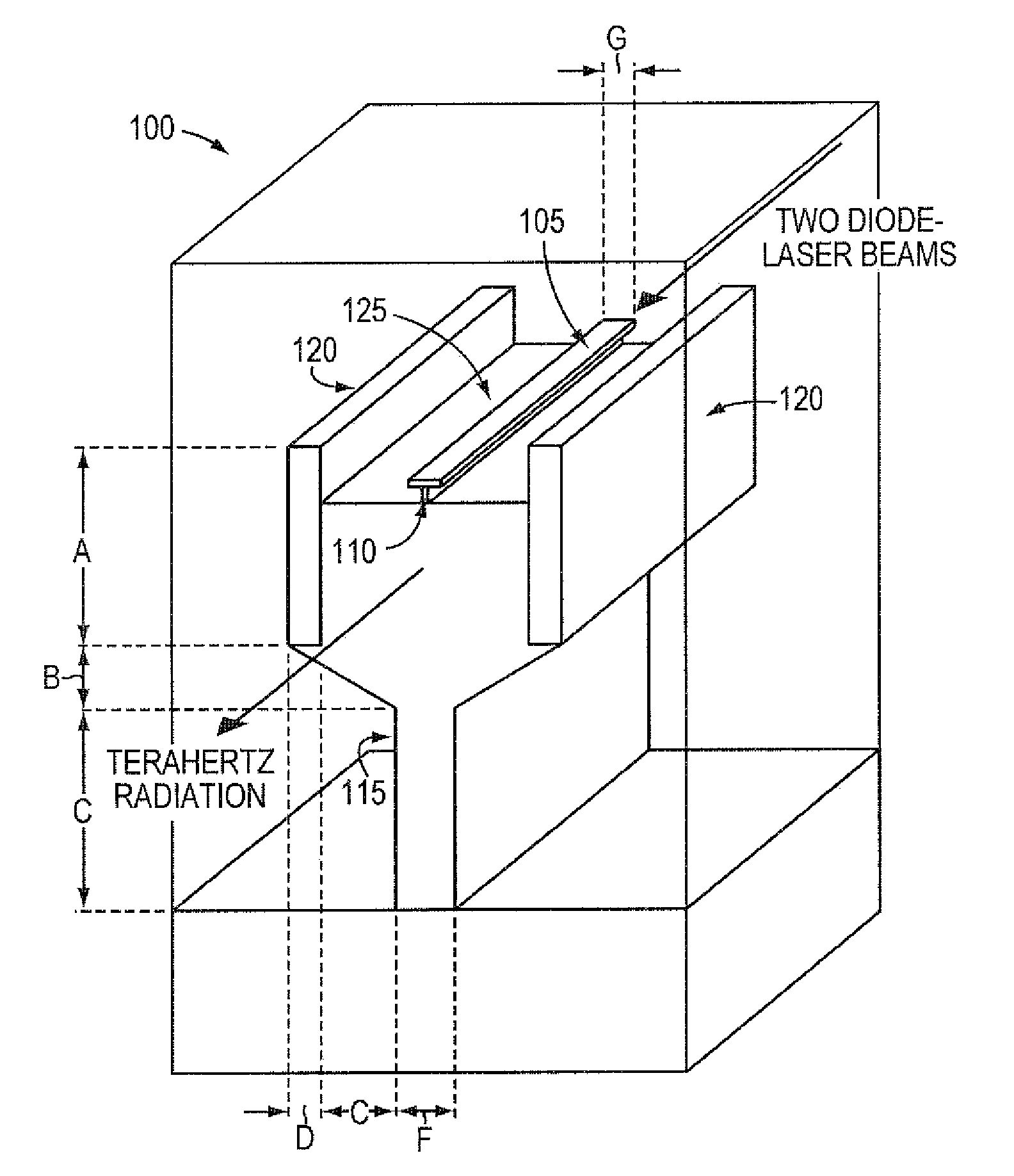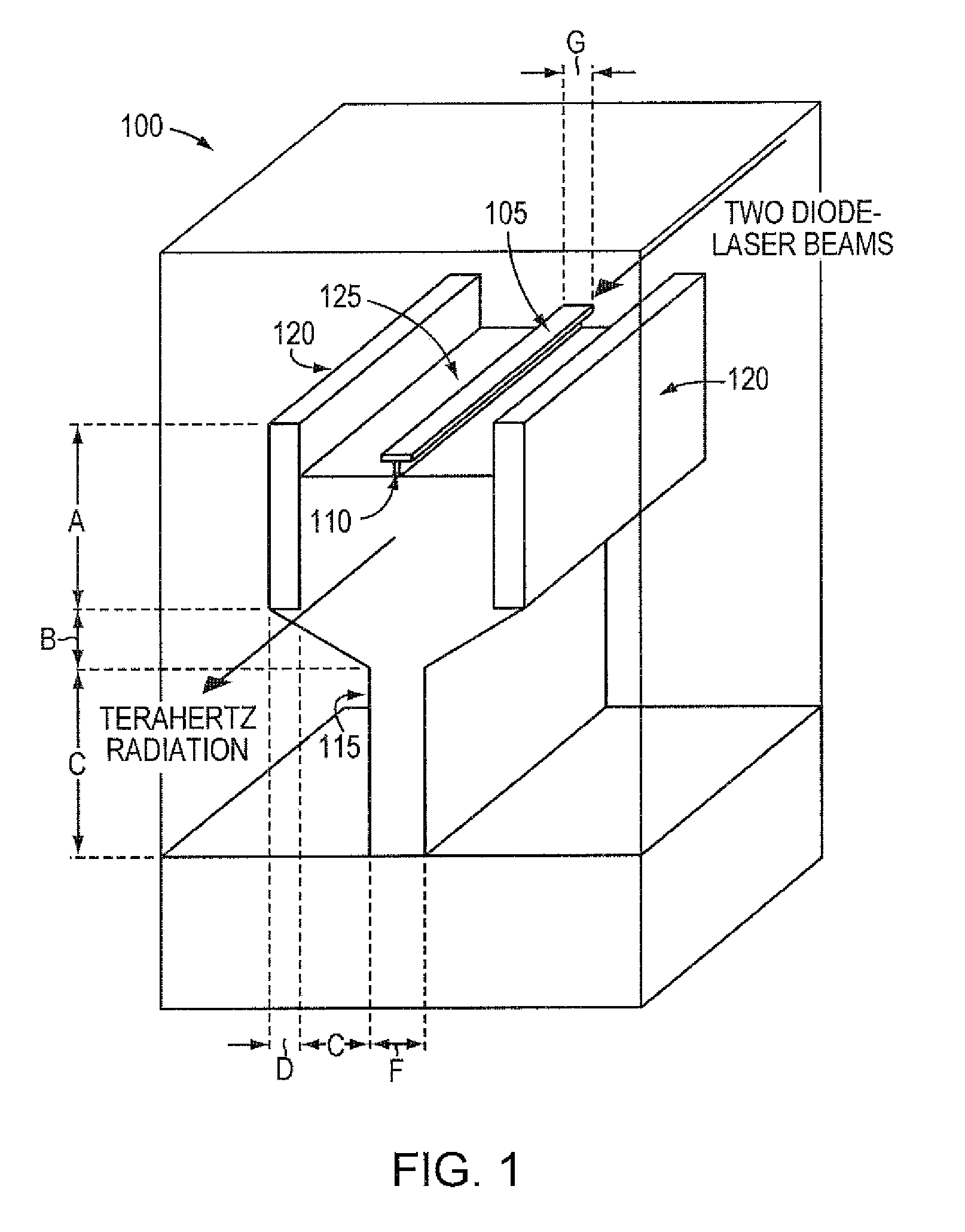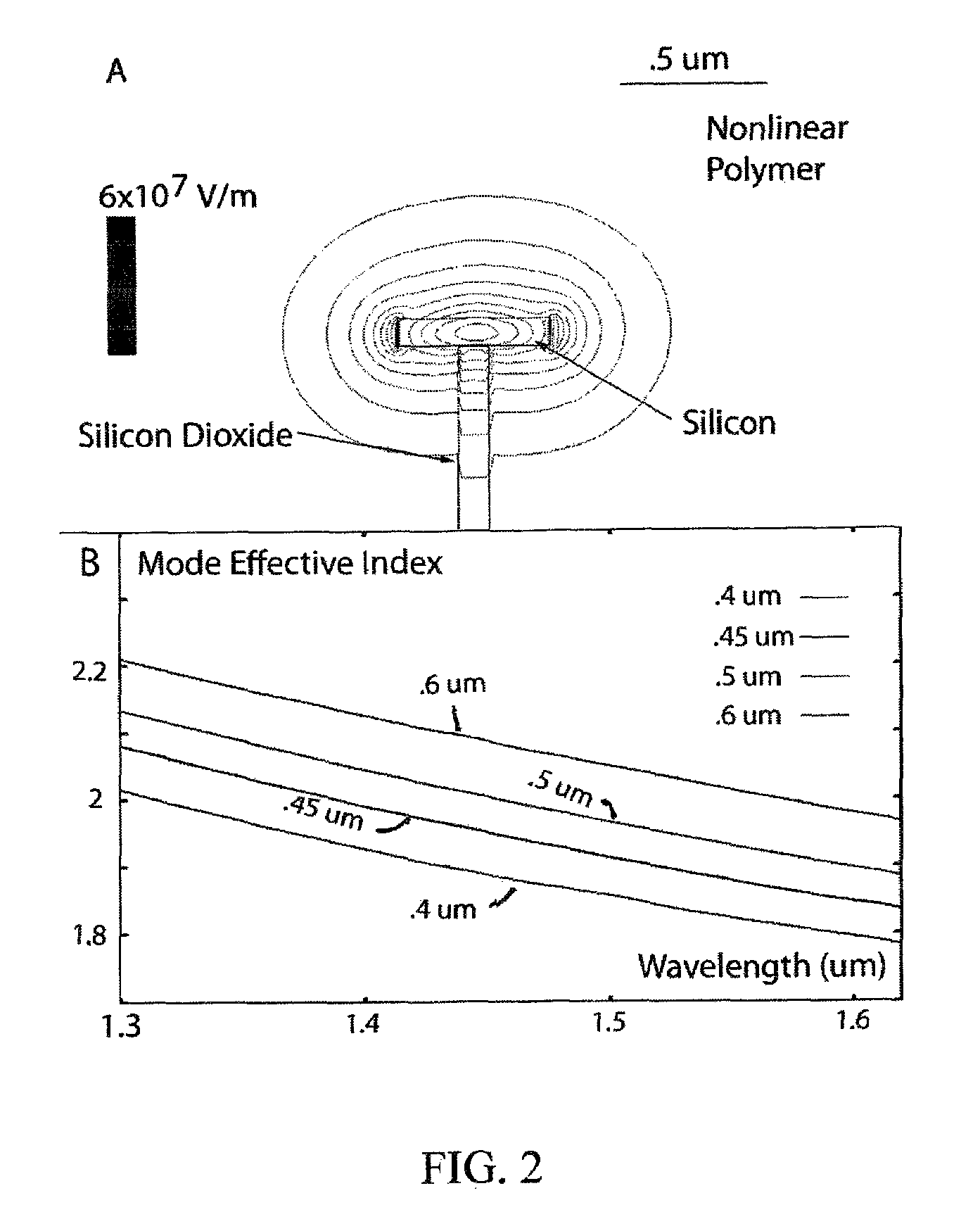Low loss terahertz waveguides, and terahertz generation with nonlinear optical systems
a nonlinear optical system and low-loss technology, applied in the field of optical and terahertz sources and detectors, can solve the problems of high cost of optical devices, complexity and cost of electronics, and the limited speed of free-carrier diffusion of optical detectors and modulators available today, and achieve the effect of enhancing the nonlinear optical coefficien
- Summary
- Abstract
- Description
- Claims
- Application Information
AI Technical Summary
Benefits of technology
Problems solved by technology
Method used
Image
Examples
Embodiment Construction
[0021]The applications of Terahertz radiation, roughly defined as electromagnetic radiation with a frequency ranging from 0.5-10 THz, are a topic of active research. They include medical imaging, remote sensing, chemical detection, and tactical imaging. One significant impediment in this field is the expense and complexity associated with Terahertz sources. Current methods for generating THz frequencies include using spectrometers to filter blackbody radiation, pulsed lasers combined with nonlinear optical materials to exploit difference frequency generation, quantum cascade lasers, and high frequency microwave mixers among others. Another recent approach has been to combine quantum cascade lasers and difference frequency generation. Some recent work on Terahertz devices has focused on metamaterials, which may enable switching and control of Terahertz radiation, but this has not yet resulted in significant progress on new Terahertz sources. All of the aforementioned methods of gener...
PUM
 Login to View More
Login to View More Abstract
Description
Claims
Application Information
 Login to View More
Login to View More - R&D
- Intellectual Property
- Life Sciences
- Materials
- Tech Scout
- Unparalleled Data Quality
- Higher Quality Content
- 60% Fewer Hallucinations
Browse by: Latest US Patents, China's latest patents, Technical Efficacy Thesaurus, Application Domain, Technology Topic, Popular Technical Reports.
© 2025 PatSnap. All rights reserved.Legal|Privacy policy|Modern Slavery Act Transparency Statement|Sitemap|About US| Contact US: help@patsnap.com



